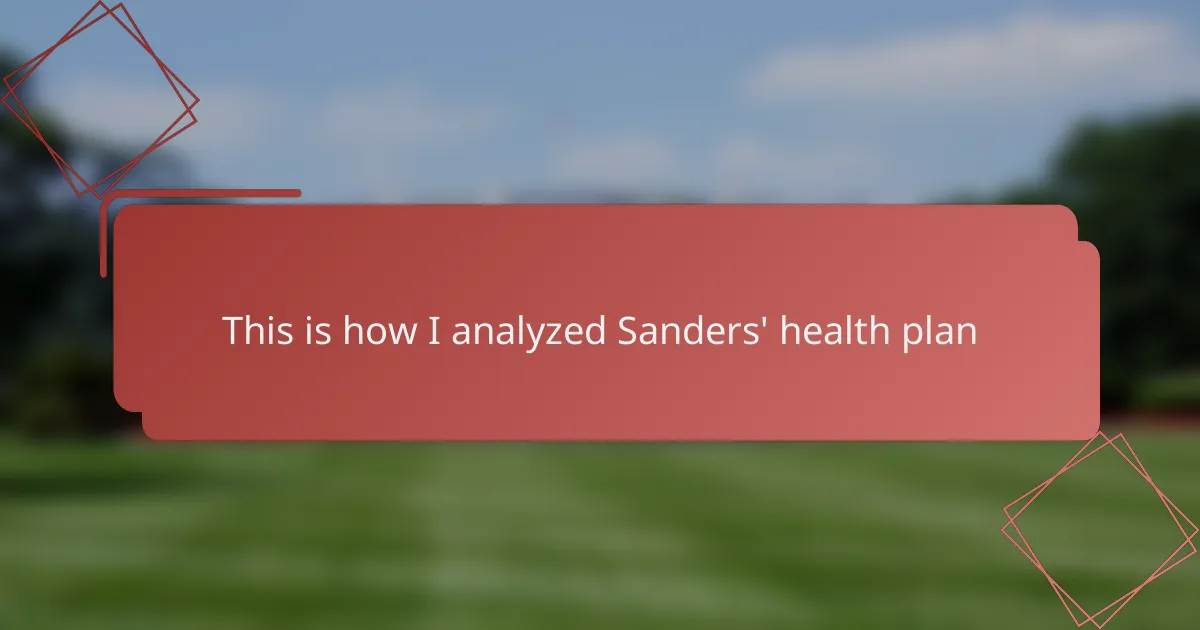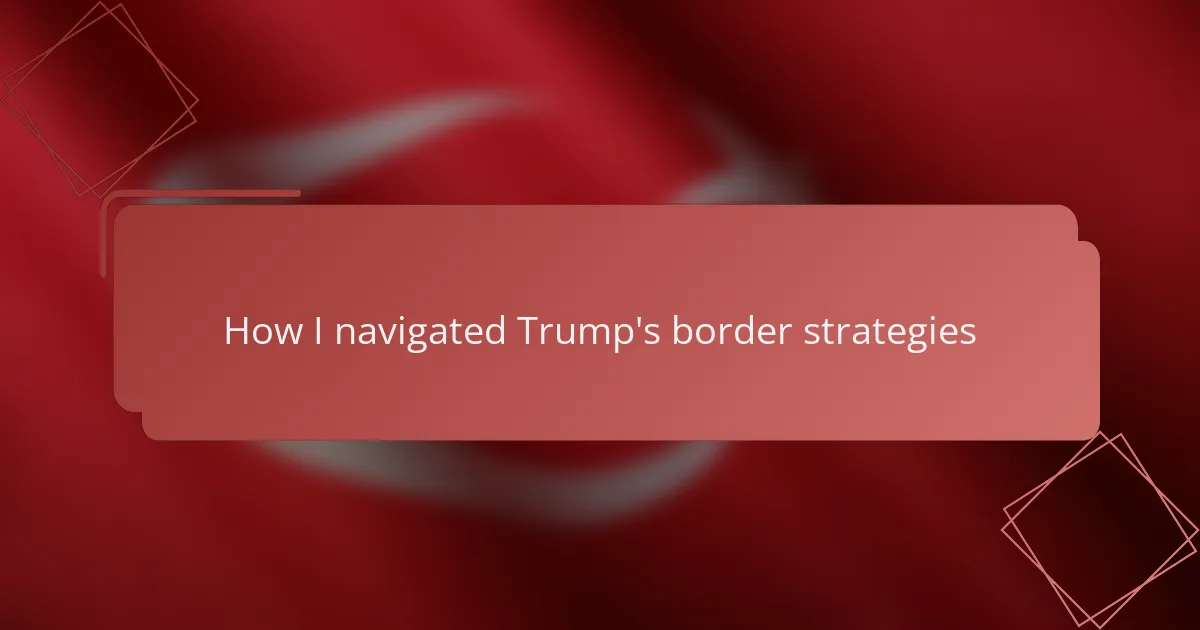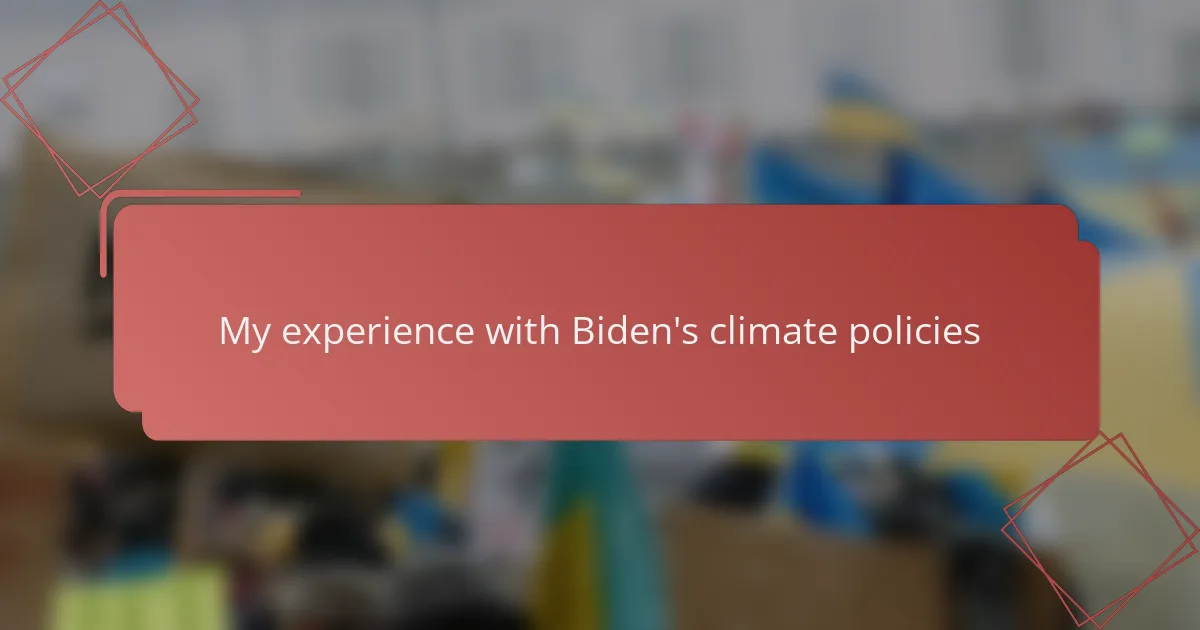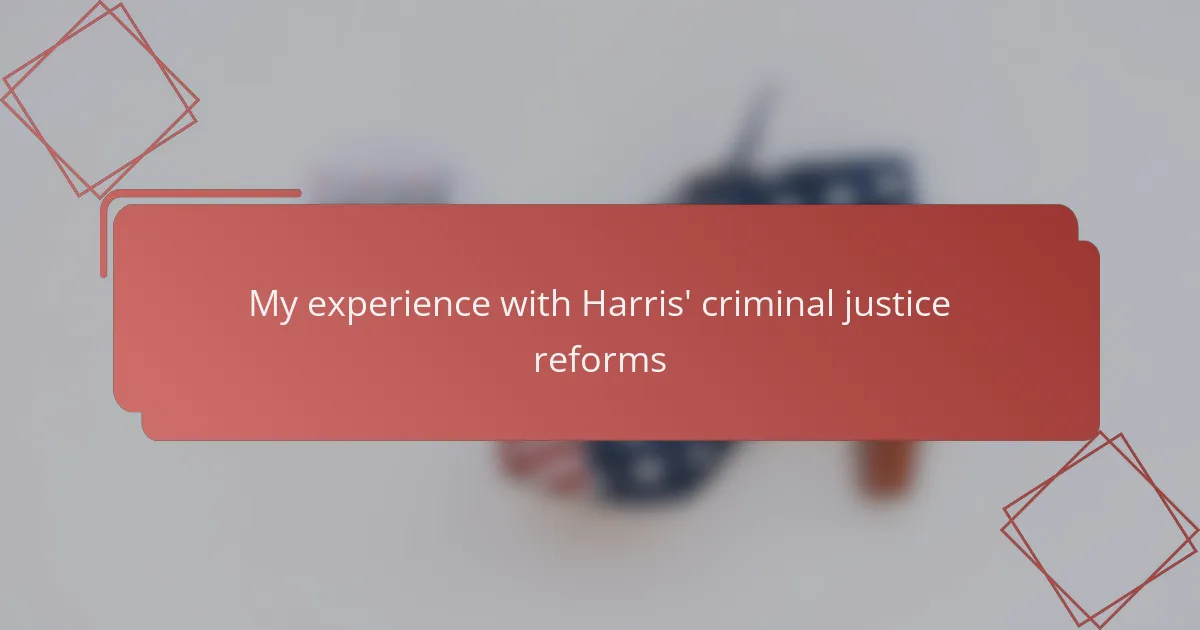Key takeaways
- Political satire effectively blends humor and critique, making complex political issues more relatable and engaging.
- Analyzing satire reveals deeper layers of meaning and informs public perception about political plans, such as Sanders’ health initiative.
- Satirical commentary highlights contradictions and absurdities in political promises, encouraging critical reflection while entertaining audiences.
- Satire serves as a tool to simplify complex issues, amplify emotional appeal, and increase audience engagement in political discourse.
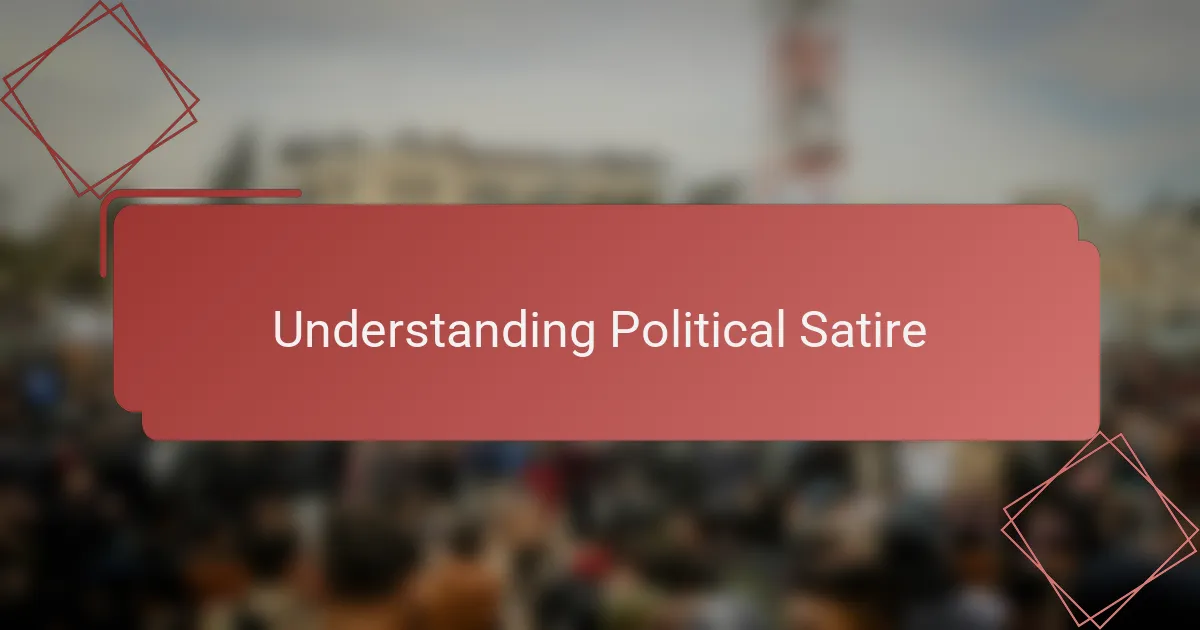
Understanding Political Satire
Political satire is like a well-aimed joke with a serious undertone. I remember the first time I caught a satirical piece about healthcare reform—it made me laugh, but also think deeply about the flaws and promises in actual policies. This blend of humor and critique helps me see beyond headlines and soundbites, unpacking complex issues like Sanders’ health plan with fresh perspective.
What makes satire powerful is its ability to cut through political jargon and connect emotionally. It’s not just about pointing out flaws; it invites us to question and sometimes even feel frustrated or hopeful. From my experience, satire reshapes my understanding by making dense topics more relatable and sparking a critical yet playful dialogue.
- Uses humor and irony to criticize political figures and policies
- Breaks down complex political issues into accessible commentary
- Engages audiences emotionally, encouraging reflection and debate
- Challenges official narratives and highlights contradictions
- Provides a platform for voices outside mainstream political discourse
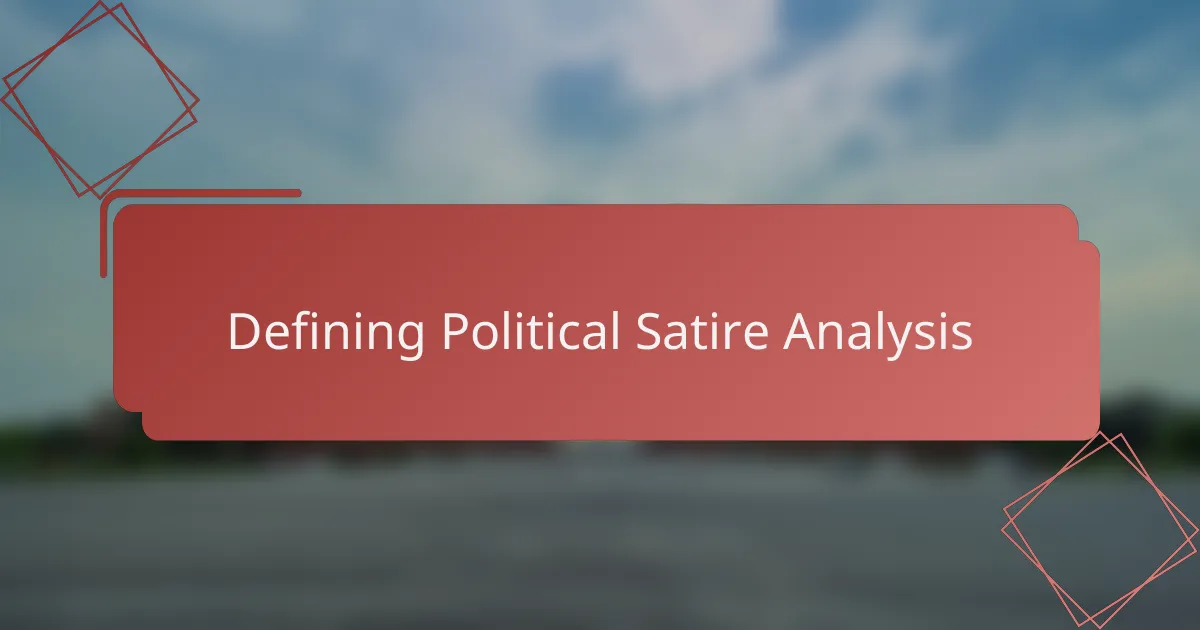
Defining Political Satire Analysis
Political satire analysis digs beneath the humor to uncover the real messages behind political jokes and exaggerations. When I first dove into this kind of analysis, I was struck by how satire cleverly exposes truths that might otherwise be overlooked or ignored.
From my experience, analyzing political satire means looking for the layers of meaning beneath the punchlines. Here’s what I focus on:
- Identifying the target of the satire and their role in politics
- Understanding the exaggeration or irony used to highlight issues
- Considering the cultural and social context that shapes the humor
- Examining how satire influences public perception and political opinions
- Recognizing the emotional impact on both supporters and critics
This approach helped me make sense of Sanders’ health plan satire by teasing out the underlying critiques and humor woven through the narrative.
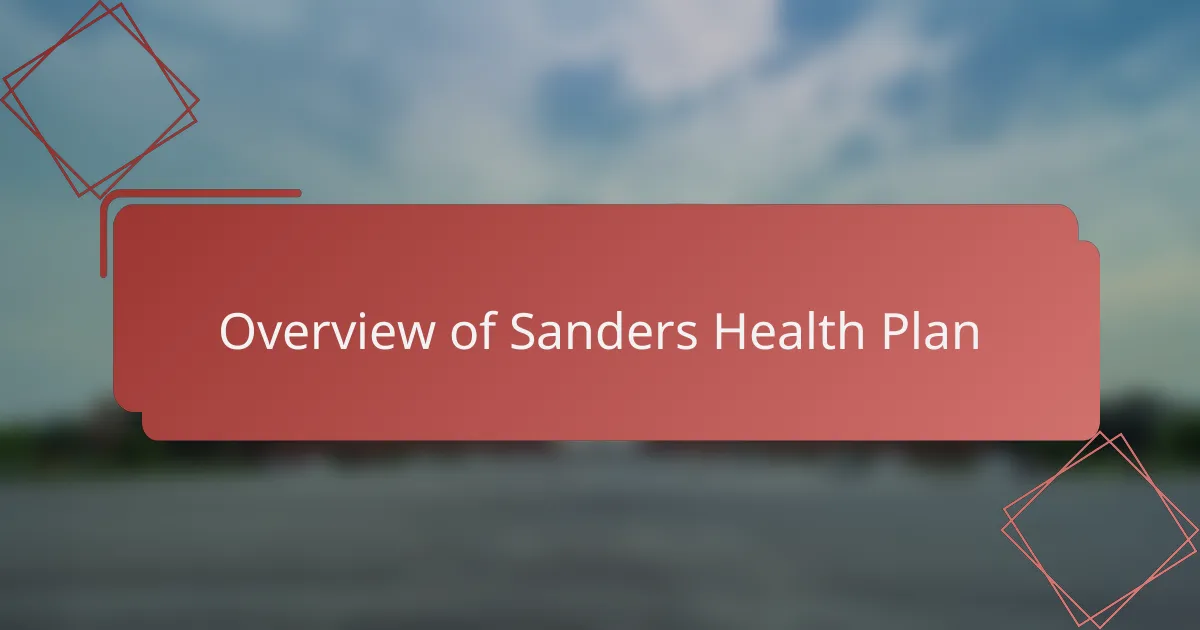
Overview of Sanders Health Plan
When I first looked into Sanders’ health plan, what struck me was its bold promise: a single-payer system that covers every American. It’s not just about healthcare—it’s a complete overhaul aiming to replace private insurance with government-funded care. That idea sounded both inspiring and, frankly, a bit overwhelming to me.
I remember wondering, how realistic is this dream of “Medicare for All”? Sanders’ plan guarantees comprehensive coverage from birth to death, including dental, vision, and mental health. Reading through the details, I felt both hopeful for accessibility and skeptical about the massive shifts it demands in our current system.
What I find fascinating—and what satire often hammers home—is the debate this plan ignites. Is it an idealistic leap or a practical necessity? That tension creates the perfect ground for humor and critique, helping me see the plan’s strengths and flaws from a fresh, more human angle.
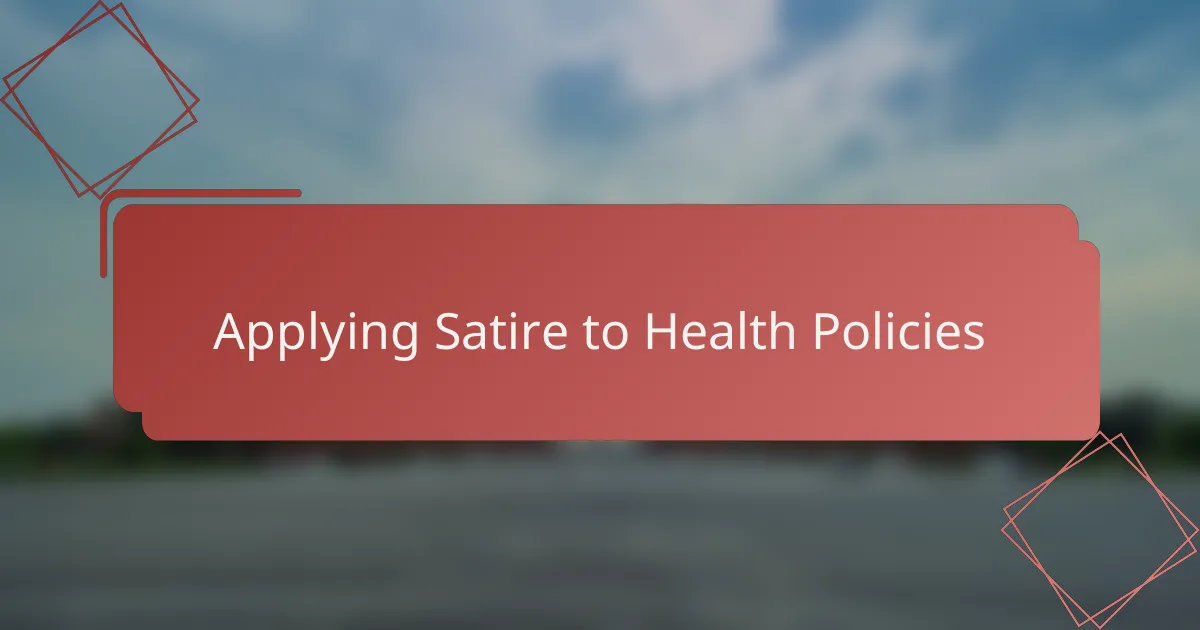
Applying Satire to Health Policies
When I first dived into Sanders’s health plan through the lens of satire, I realized how humor sharpens the critique. Satire doesn’t just point out flaws—it exposes the absurdity behind the political promises and the gaps between rhetoric and reality. I found myself chuckling at exaggerated scenarios but also feeling a bit uneasy, realizing how some of those exaggerations aren’t far off from real policy challenges.
Looking closely, applying satire helped me highlight not only the idealism in Sanders’s plan but also the complexities that are often glossed over. In fact, turning key points into satirical commentary made the potential pitfalls clearer, making the analysis more engaging and less dry than a straightforward policy review.
- Uses irony to reveal contradictions in the plan’s feasibility
- Amplifies political buzzwords to show their detachment from everyday realities
- Exaggerates benefits or consequences to provoke critical thinking
- Blends humor with facts to keep readers both entertained and informed
- Reflects public skepticism while maintaining a respectful critique of intentions

Analyzing Sanders Plan Satirically
Analyzing Sanders Plan Satirically
When I first dove into Sanders’ health plan, I couldn’t help but chuckle at the over-the-top promises that almost feel too good to be true. It’s like he’s offering a magical solution to everyone’s medical bills, which instantly made me skeptical but also oddly hopeful. I remember thinking, “If only health care was as easy as flipping a switch—how great would that be?”
Here’s what struck me most while poking fun at the plan:
– Universal coverage sounds perfect, but imagining bureaucrats calmly managing it made me picture tons of red tape—and endless waiting rooms.
– The “pay for what you can” idea feels noble, but I visualized my accountant turning into a therapist, dealing with confused patients instead of numbers.
– Cutting out insurance companies sounds satisfying, yet I wondered if anything chaotic might sneak in instead—like a health care version of reality TV drama.
– The promise to save money had me imagining a magic wand—because, realistically, someone has to foot the bill somewhere.
– Supporters paint a picture of a utopia; critics see a nightmare, so I found myself stuck somewhere in the middle, laughing and worrying simultaneously.
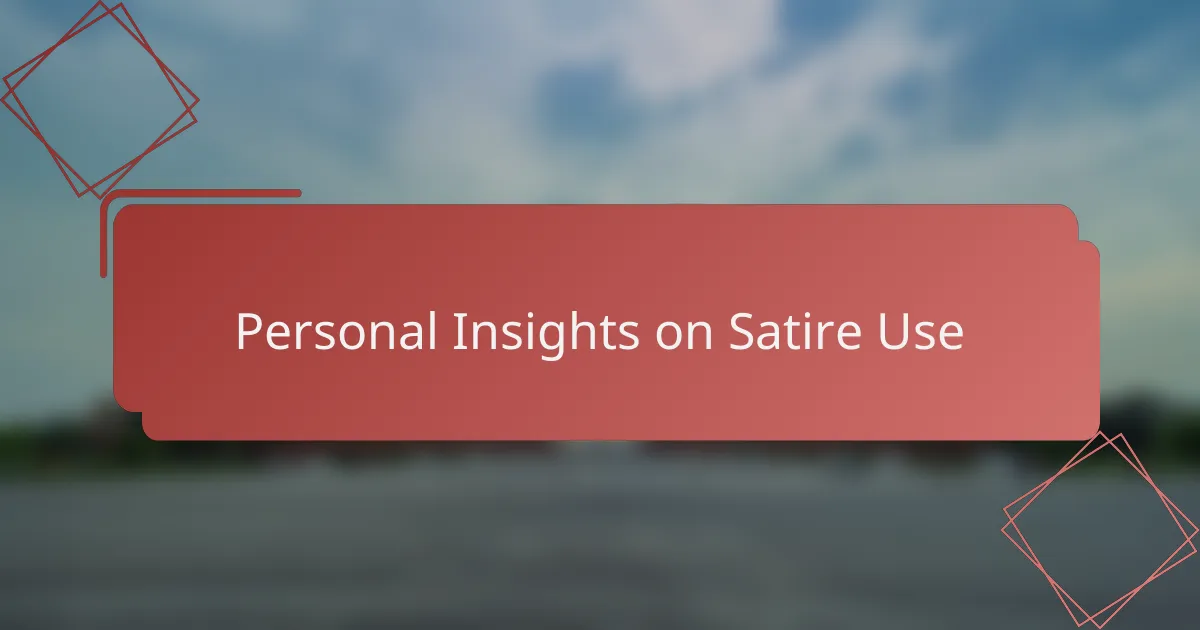
Personal Insights on Satire Use
Personal Insights on Satire Use
When I first dug into Sanders’ health plan through the lens of satire, I felt an almost bittersweet relief—the humor peeled back layers of complexity and tension. Satire, in my experience, sharpens the absurdities while inviting us to think critically without feeling overwhelmed. Sometimes, I found myself laughing and then pausing to question how seriously the flaws in the plan might affect real lives.
| Aspect | Effect in Satire |
|---|---|
| Complex Policy Details | Simplified and exaggerated to highlight contradictions |
| Political Rhetoric | Mocked to expose overpromises and unrealistic expectations |
| Emotional Appeal | Amplified to connect with audiences through humor and empathy |
| Audience Engagement | Increased by combining information with entertainment |
